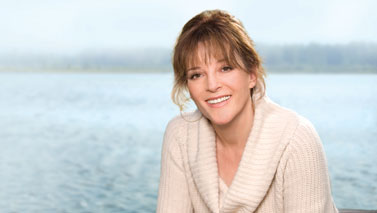Marianne Williamson may be a best-selling author and acclaimed spiritual teacher, but she insists she’s just like anybody else. “If there’s been anything unique about my story, it’s been how not unique it is,” she says. “I’ve absolutely lived the story of my times.”
Indeed, the 56-year-old Houston native stumbled through the tumultuous 1960s and cynical ’70s just as many other baby boomers did — looking for meaning in an often surreal world. And, like many others, she found a spiritual path that helped her make sense of it all.
“There had been such huge social revolution in the 1960s. And in the 1970s, it’s like the dust was settling,” Williamson says. “I didn’t understand my body, I didn’t understand what I was supposed to do with my life. For me, A Course in Miracles provided a way out of the fog.”
The Course, a self-reflective spiritual study and practice, emphasizes universal spirituality, healing relationships and new perceptions of reality. Since becoming a practitioner in 1979, Williamson’s life work has centered on sharing its message with others.
While these concepts have found a wider audience in recent years through the writings of Eckhart Tolle, Deepak Chopra and others, Williamson encountered her share of skeptics when she first began to spread the word. “I was called a ‘New Age guru’ in some quarters, a label that was used to trivialize and minimize the subject about which I was speaking,” she says. “By their logic, even Ralph Waldo Emerson and Walt Whitman would have been called New Age writers.”
But what started as a small weekly lecture at the Philosophical Research Society in the Los Feliz neighborhood of Los Angeles grew steadily in the wake of the nation’s cultural and social turbulence. And Williamson has since published 10 books, become a popular lecturer, and recently began hosting an Oprah and Friends radio show that reaches thousands of listeners daily. “It feels like a tremendous opportunity, but also a great responsibility,” she says of the show.
Many of her listeners struggle with difficult relationships, a traumatic past or self-sabotaging behavior, she says. Some are facing major life decisions of the sort Williamson addresses in her latest book, The Age of Miracles: Embracing the New Midlife (Hay House, 2008). “It’s as if — when you reach a certain place in your 40s and 50s — that nature’s grace period is over,” she explains. “You get to a point in your life where if you’re not proactively seeking health, if you’re not seeking a way to become the best person you can possibly be, you are more likely to be defeated by your own weaknesses.” (For more midlife insights from Williamson, see “Rediscover Your Inner Athlete,” in this issue.)
The key to making change, she suggests, isn’t so much learning a new way of thinking as it is unlearning an old way of thinking. “To really take a stand for love within yourself and for others is not just a bumper sticker slogan. It’s deeper than that. It’s taking a stand that runs so counter to the programming that not only you have received, but that your parents’ parents’ parents received.”
This “unlearning” is a journey that takes daily practice, Williamson admits. “It’s just like if you go to the gym, you build new muscles. Once you build those muscles, you don’t stop going to the gym, because if you stop, your muscles will sag. It’s the same with your psychological, emotional and spiritual muscles — you have to work them, and as you do, you grow stronger within.”
Williamson stays strong by making space for daily meditation. “Too often we wake up in the morning and turn on the television or the radio, have caffeine, and rush out the door. That’s a prescription for depression and anxiety,” she says. “If you wake up in the morning and you reflect or meditate, then because you’ve begun your day within an entirely different gestalt, you will have a different day.”
It’s just another example of how change begins by shifting our mindset. “The life you live externally is nothing more than a reflection of what’s going on in your mind,” she says. “Once you realize that thought is cause and life experience is the effect, then you realize that the greatest way to change your life is to change your thinking.”
This process is not always easy. In fact, intense self-reflection can be downright exhausting. For that reason, she says that it’s best taken one step, one relationship and one situation at a time.
“I think the main point here is that there is another way. And when you consider the possibility that there’s another way, then everything changes — you’re on new footing. You’ve stepped onto an entirely new ground, a much higher ground — within yourself and in the world.”
Video Extra! See the behind-the-scenes footage from our photo shoot with Marianne Williamson at experiencelife.lifetime.life/videos.

This Post Has 0 Comments